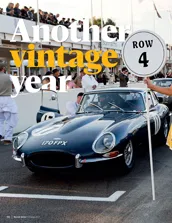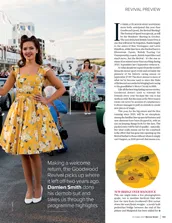About two decades ago, while attending an open house the night before the annual L.A. Roadsters Show, McIntyre’s attention gravitated to a pair of Deuce coupes – built by Cornell and Schmidt, he discovered later – that were throwbacks to the cars that had raced on the dry lakes of the Mojave Desert after World War II.
“There’s something magnetic about the style and substance of their cars, almost beyond description,” McIntyre says. “The changes are very subtle, and a lot of people don’t notice them, but they’re necessary to achieve a certain ride height or a certain rake or a certain proportion of the body to the wheelbase.”
At the turn of the century, the most prominent player in hot rodding was Boyd Coddington, whose name had become synonymous with show car-style street-rods with shiny paint and machined aluminum billet accents. Schmidt and Cornell were in the vanguard of a radical movement to return hot rodding to its roots – using DIY engineering and authentic old parts to transform cheap, prosaic transportation into deeply personal machines that melded speed with style.
“I want you to look at one of our cars and say, ‘Man, I want to get into that son of a bitch and go for a ride.’”
“Hot rods had been neutered,” Schmidt says. “You decided which body you wanted, which red, which 350 [cubic inch engine], which wheels. They were all the same. They were all ‘safe.’ We built a couple of ’32 coupes – bare bones, in your face, loud, nasty, obnoxious traditional hot rods. We went to the York Nationals. The entire place was in shock. I had an offer to buy my car before I got out of it. Then it was, ‘Would you build me one?’”
In fact, that’s exactly what McIntyre asked Cornell and Schmidt when he met them – and they refused. They were enthusiasts, they insisted, not professional builders. But McIntyre and fellow collector Dennis Varni persisted, and Schmidt and Cornell eventually relented.
Rolling Bones opened in 2004 in an old cow barn in a rural hamlet in upstate New York.
“It’s a three-man shop,” Schmidt says. “We build two cars a year, and we have a five-year waiting list. We turn down jobs once a week. Most people go to a shop to get their dream car. They come to us to get OUR car.”



